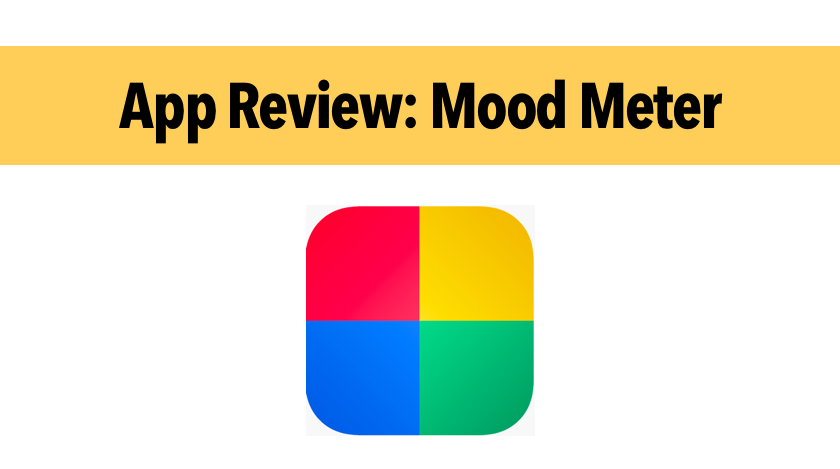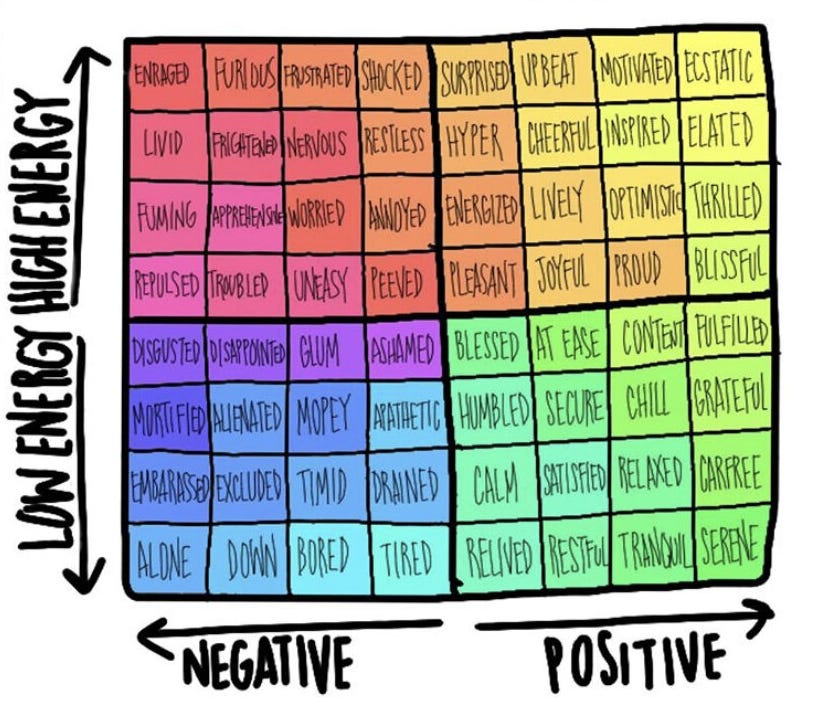Mood Meter: identify and regulate your emotions
A map of emotion words to help people discover and label emotions with more specificity.

We learn emotional concepts as we grow. Whereas toddlers might only know whether they're happy and sad, older children might understand emotions like fear and anger.
Recently, schools have begun to incorporate social-emotional learning (SEL) programs (i.e. RULER, Second Step) into the classroom to help kids make sense of their emotions. For instance, It might seem intuitive that we feel emotions in our bodies, but a child might not make the connection.
I would have personally loved to have this kind of education when I was still in school, but there’s no reason that adults can’t also use the tools developed for these programs.
The Mood Meter app was developed by the Yale Center for Emotional Intelligence. The core idea is to help people discover and label emotions with more specificity.
You’re shown a 10 by 10 grid of emotion words, with the horizontal axis being how pleasant or unpleasant you feel and the vertical axis relating to high or low energy.

Once you choose an emotion, it gives you a chance to describe why you are feeling that way and then presents you with different strategies to shift your emotions. The app also provides some basic tracking of your emotions over time. That’s it!
It sounds simple, but many adults struggle with accurately labelling their emotions, and often have a limited set of words that they use to describe them. The Mood Meter app helps put more nuance on our words and language for emotions.
For instance, "stress" is a word that's commonly used to mean at least four distinct emotions, each with it's own source (internal or external):
- Anxiety is worry about future uncertainty and our inability to control what will happen to us.
- Fear is the palpable sense of a danger that lies just ahead and will eventually strike at us.
- Pressure is the force from the outside that tells us something important is at stake, and whether we succeed or fail will depend on how we perform.
- Stress is what we feel when we’re facing too many demands from all of the above and fear we may not be up to it.
Although it might seem like semantics, attaching the correct label to emotions helps us begin figuring out what to do about it. Beyond that, it also helps other people meet our needs by expressing how we feel with more specificity.
Don't be satisfied with "happy" when you really mean "ecstatic", "blissful", or "inspired". Learn the difference between "discouraged" and "dejected" instead of settling for the generic "sad".
This is a bit speculative, but we can only assume that the size of our emotional vocabulary is correlated with the importance of emotions in our lives and the richness of our emotional experience.
I'll leave off with a quote from Marc Brackett,
“When we don’t have the words for our feelings, we’re not just lacking descriptive flourish. We’re lacking authorship of our own lives.”
Friday Brainstorm Newsletter
For more, join 300+ curious people subscribed to the Friday Brainstorm newsletter. It’s one email a month with the most interesting ideas I've found related to science and health.